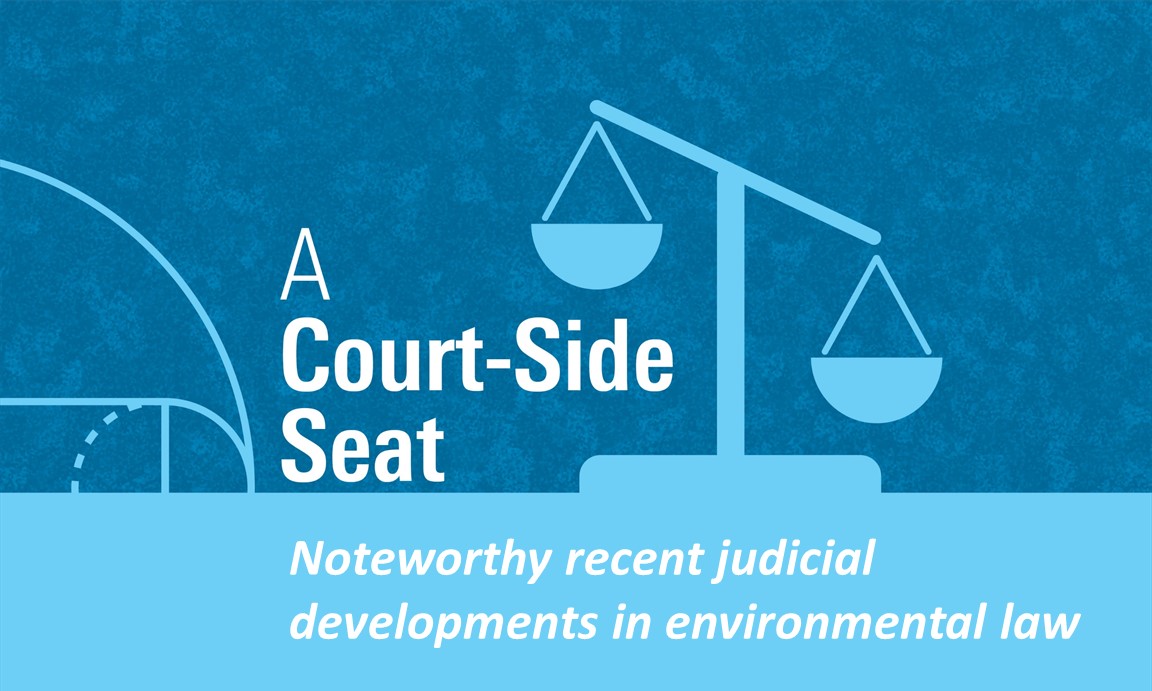We interrupt our usual scrutiny of the courts to focus (mostly) on the important developments in notices and rulemaking issued by and concerning federal regulatory agencies and departments in the past several weeks.
Articles Posted in Environmental
Real Estate & Construction News Round-Up (11/10/21)
The House of Representatives passes the Senate version of the Infrastructure Investment and Jobs Act (IIJA), the construction industry continues to struggle with labor shortages, effects of climate change put the built environment at risk, and more.
Real Estate & Construction News Round-Up (11/03/21)
Amenity-rich buildings become a key focus in enticing employees back into the office, supply chain links are strained by a lack of storage capacity in warehouses and port areas, green lease signings are on the uptick, and more.
Environmental Justice: A Legislative and Regulatory Update
Environmental Justice, as an urgent policy priority of the Federal Government, dates back to 1994, and President Clinton’s issuance of Executive Order 12898. This order directed federal agencies to identify and address, as appropriate, “the disproportionately high and adverse human health and environment effects of its many programs, policies, and procedures on minority populations and low-income populations.” Executive Order 12898 supplements Executive Order 12550 (1980), whose primary legal basis was Title VI of the Civil Rights Act of 1964, in particular, Sections 601 and 602, which prohibit discrimination in programs and activities receiving federal financial aid and assistance.
Over the years, the Supreme Court has reviewed the scope and importance of Title VI. For example, in Alexander v. Sandoval, decided in 2001, the Court concluded that while private parties could sue to enforce Section 601 or its implementing regulations, Section 601 only prohibits intentional discrimination; which is very difficult to prove. In addition, the Court ruled in Sandoval, that private parties cannot sue to enforce regulations implementing Section 602. Perhaps as an acknowledgement of these shortcomings, the Environmental Protection Agency (EPA) has for many years operated an administrative system to process environmental justice complaints (see 40 CFR Part 7). The process is complex and the results—usually whether a state agency has failed to uphold Title VI—have generally been unsatisfactory. To be successful, many proponents of environmental justice believe that a statutory foundation must be established, and significant efforts have been made to do so.
Recent Regulatory Activity
Selected federal regulatory actions taken or proposed by several federal agencies, including the Environmental Protection Agency:
Still Going, After All This Time: the Sacketts, EPA and the Clean Water Act
On August 16, 2021, the U.S. Court of Appeals for the Ninth Circuit affirmed the lower court’s ruling that the Idaho property of Michael and Chantell Sackett was a regulated wetlands under the then-controlling 1977 EPA rules defining “waters of the United States,” and that the Sacketts dredging and filling of their property was subject to regulation by the U.S. Army Corps of Engineers or EPA. EPA’s case, as it has been for many years, was based on 2008 EPA and Corps inspection reports and Justice Kennedy’s “significant nexus” test as the controlling opinion in the 2006 Supreme Court case, Rapanos v. United States. The Sacketts’ argument was that the text of the Clean Water Act, as interpreted by Justice Scalia and three other Justices, was controlling, but for several years, the Ninth Circuit has relied on Justice Kennedy’s opinion in these CWA controversies. The court’s opinion expressed considerable sympathy for the Sacketts as they negotiated the thicket of EPA’s regulatory processes, but it could not disregard circuit precedent. A few years ago, the Supreme Court ruled, in a unanimous decision, that EPA’s then extant administrative compliance orders were arbitrary and capricious. (See Sackett v. US, 566 US 120 (2015).) After that decision, the case was remanded to the federal district court, where it lingered for several more years.
It will be interesting to see if there will be another Supreme Court challenge to the Ninth Circuit’s disposition of the Sacketts’ Clean Water Act jurisdictional arguments.
Presidential Executive Order 14008: The Climate Crisis Order
In Review: SCOTUS Environmental and Administrative Decisions in the 2020 Term
Several decisions of interest were issued in the 2020 term, which stretched from October 2020 until early July 2021. This review will concentrate on environmental and administrative law cases.
A Court-Side Seat: As SCOTUS Decides Another Regulatory “Takings” Case, a Flurry of Action at EPA

This is a brief account of some of the important environmental and administrative law cases recently decided.
THE U.S. SUPREME COURT
Pakdel v. City and County of San Francisco
On June 28, 2021, the Supreme Court decided this regulatory “takings” case, and, in a Per Curium opinion, reversed the Ninth Circuit’s ruling that that petitioners had to exhaust their state administrative remedies before they could file this lawsuit under 42 USC Section 1983. The City government had already come to a sufficient regulatory conclusion, and the Constitution does not require additional processing. In so ruling, the Ninth Circuit ignored last term’s decision in Knick v. Township of Scott.
A Court-Side Seat: SCOTUS Clarifies Alien Tort Statute and WOTUS Is Revisited

What follows is a brief account of some of the notable U.S. environmental and administrative law cases recently decided.
THE U.S. SUPREME COURT
Nestle USA, Inc. et al. v. Doe, et al.
The Supreme Court has decided another important case interpreting the Alien Tort Statute. Released on June 17, 2021, this decision reverses the Ninth Circuit which had ruled that the respondents—six individuals who alleged they were child slaves employed on Ivory Coast cocoa farms, could sue the American-based companies for aiding and abetting child slave labor. Without dissent, the Court rejected this reading of the ATS and affirmed its own recent rulings on the scope of the ATS.
 Gravel2Gavel Construction & Real Estate Law Blog
Gravel2Gavel Construction & Real Estate Law Blog



